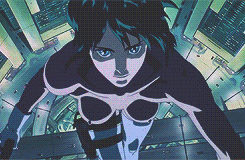The groundbreaking anime film, "Ghost in the Shell," has left an indelible mark not only on the world of animation but also on technology. Released in 1995, this cyberpunk masterpiece by Mamoru Oshii explores themes such as artificial intelligence, human enhancement through technology, and the blurred lines between the physical and digital worlds.
In "Ghost in the Shell," we see a future where humans can upload their consciousness into machines or cyberspace, creating an entirely new dimension of existence. This concept has sparked numerous discussions about the potential for advancements in AI and virtual reality technology. The film's portrayal of cyber warfare and hacking also raises questions about security measures needed to protect our increasingly interconnected world from malicious attacks.
Moreover, "Ghost in the Shell" challenges us to consider how far we should go when it comes to enhancing human capabilities through technology. The film presents a dystopian vision of society where people can choose to augment their bodies with mechanical parts or even completely replace them with artificial ones. This raises ethical questions about what constitutes humanity and whether such modifications would lead us down a path towards transhumanism.
In conclusion, "Ghost in the Shell" serves as both an entertaining work of art and a thought-provoking exploration of technology's impact on our lives. Its themes continue to resonate today, inspiring conversations about AI development, cybersecurity, and human enhancement that are crucial for shaping our future.
